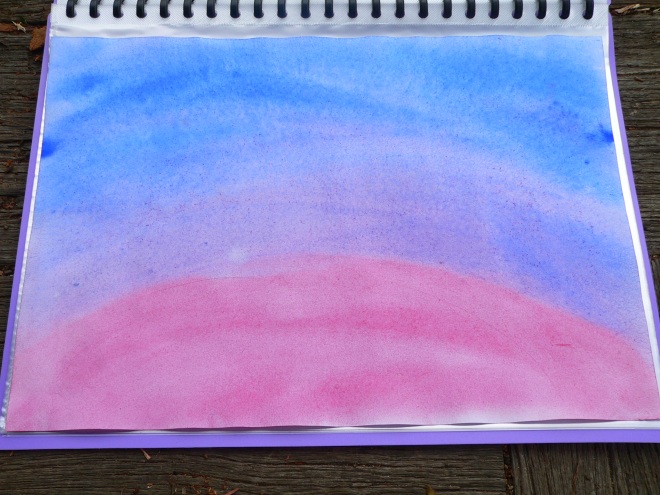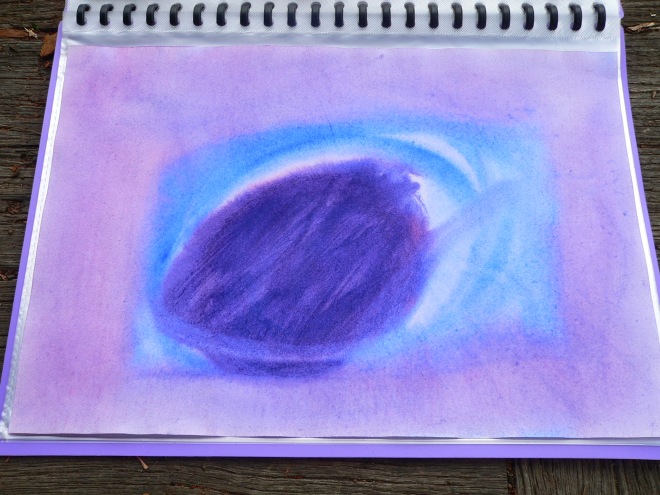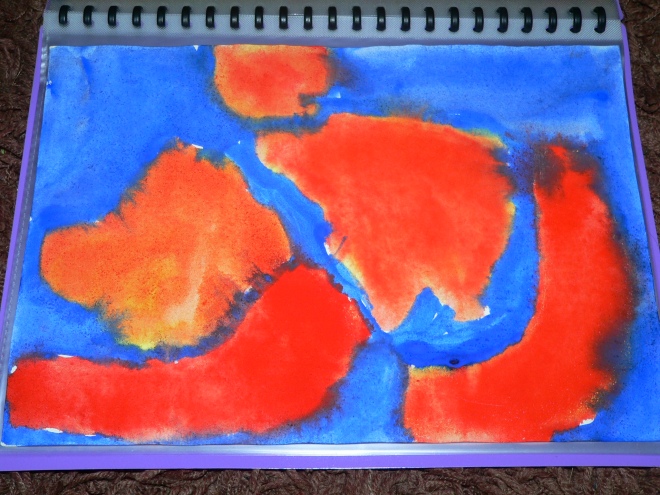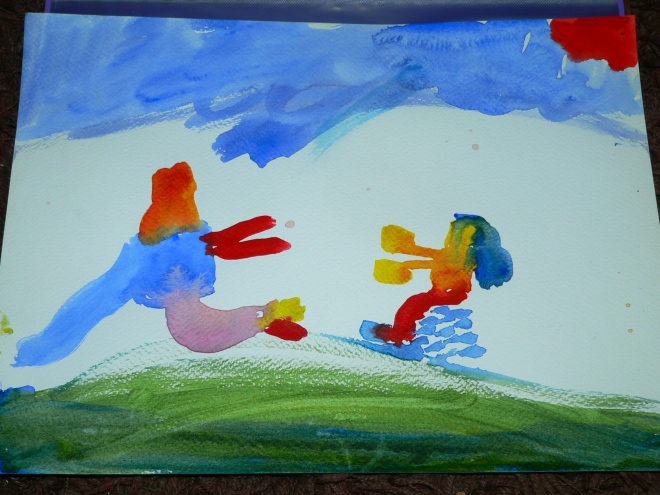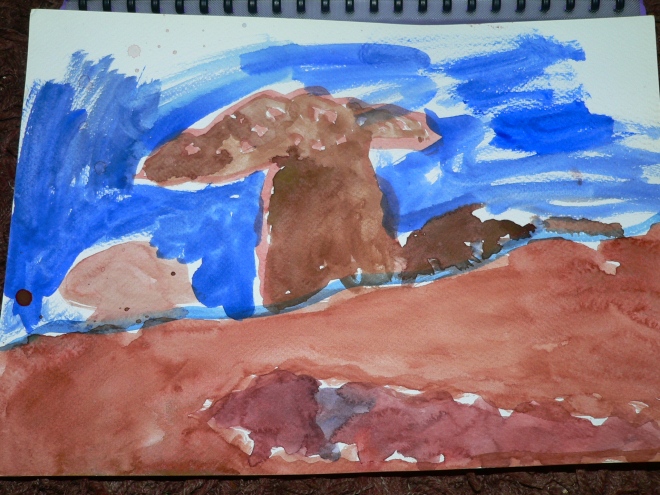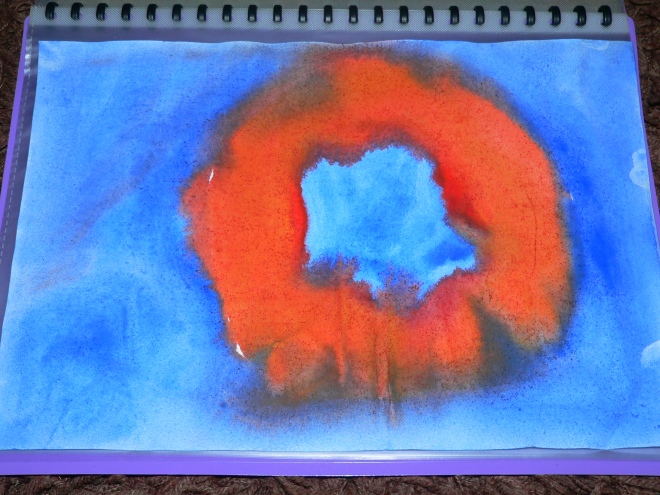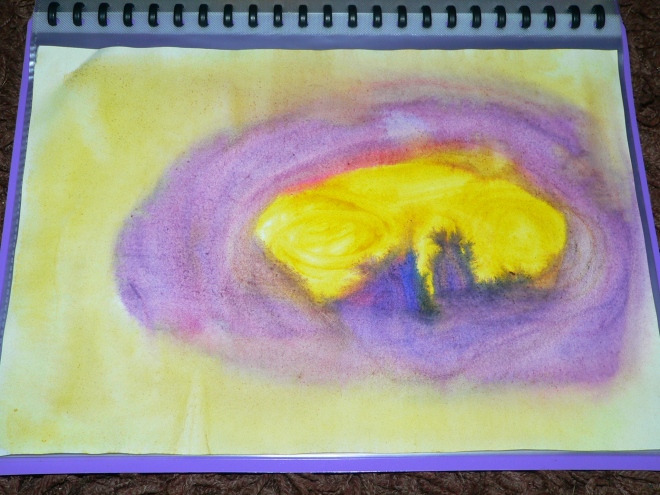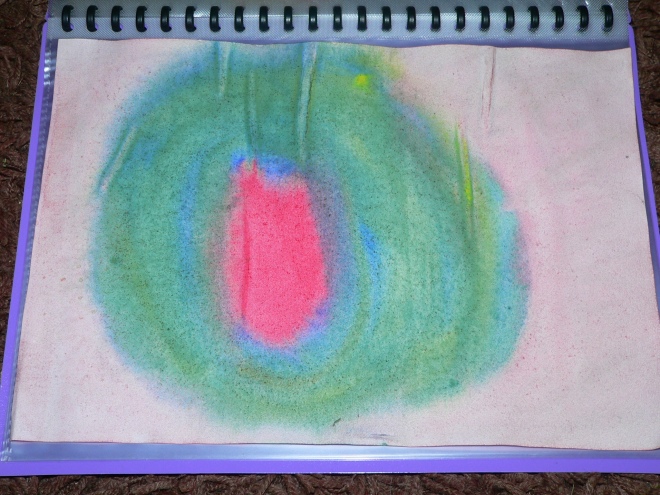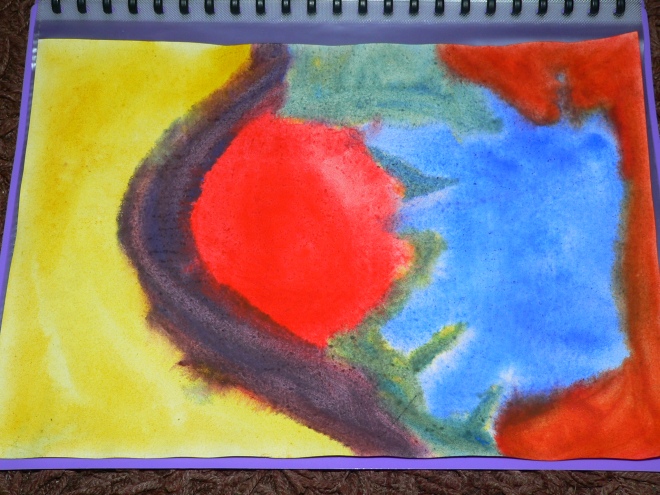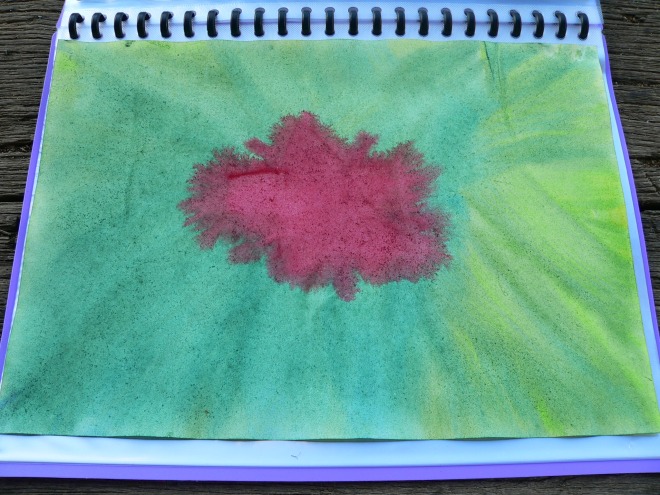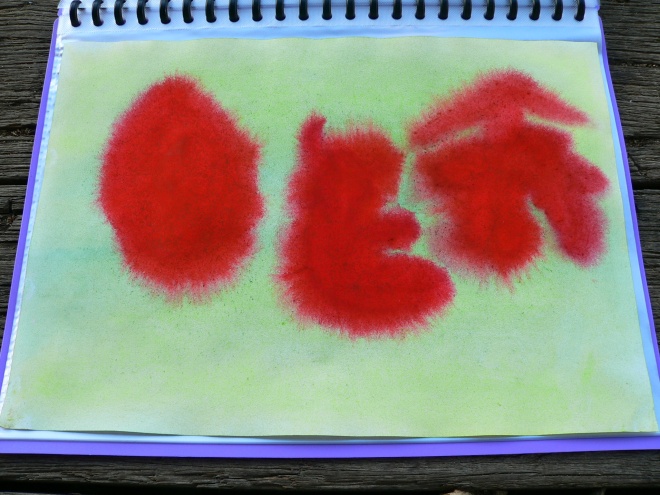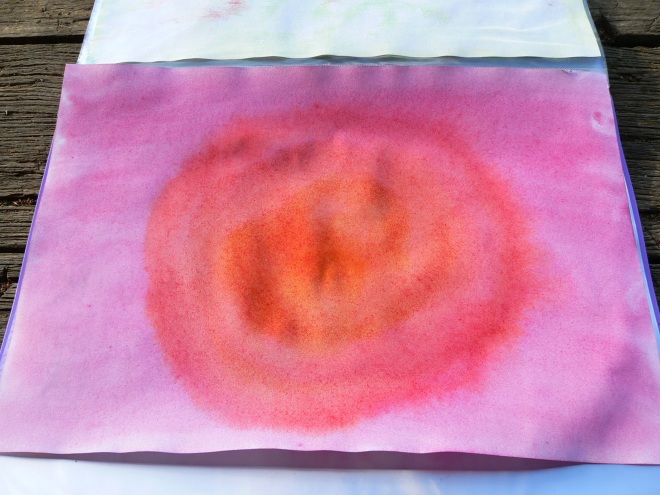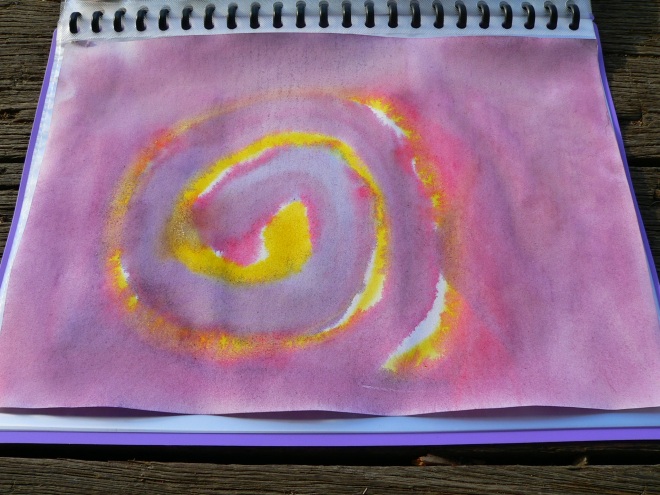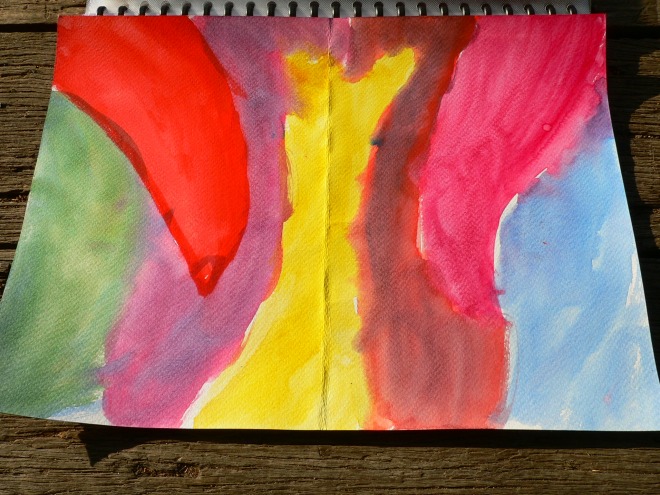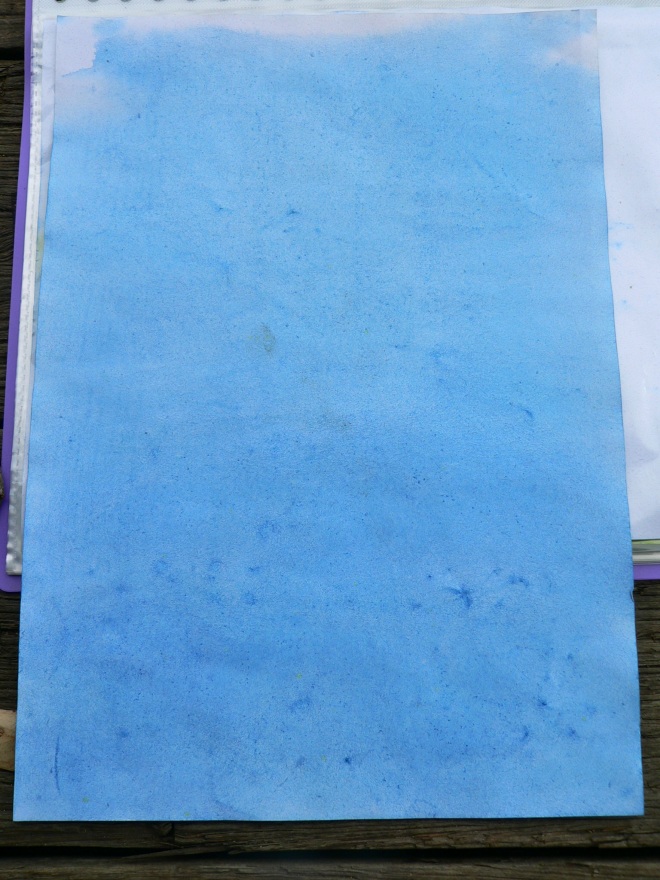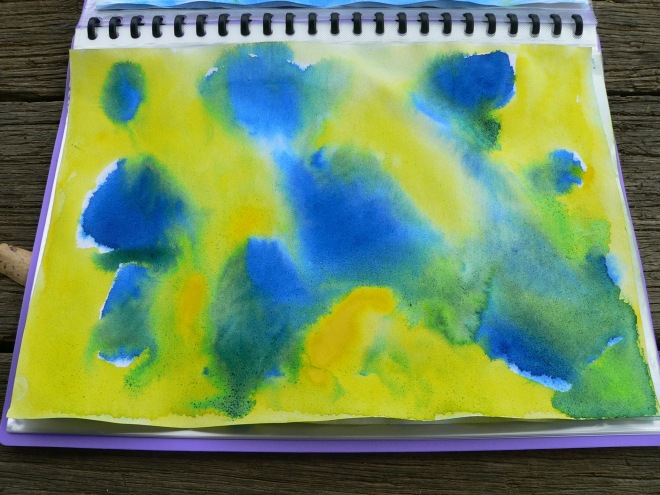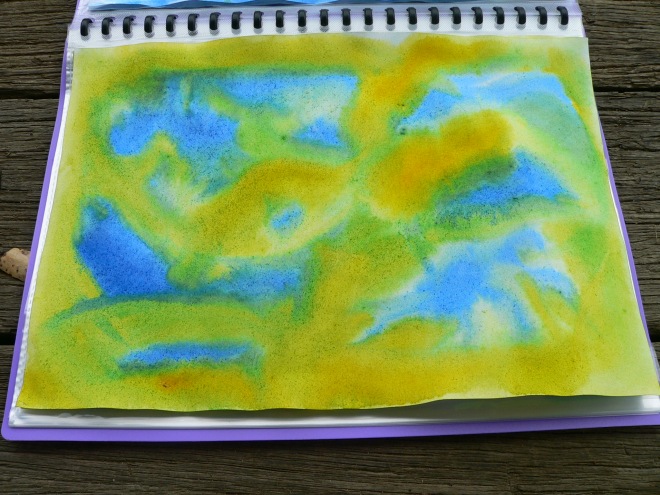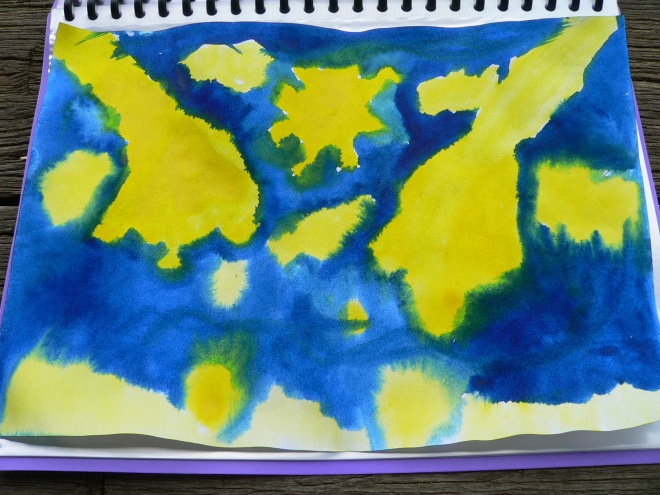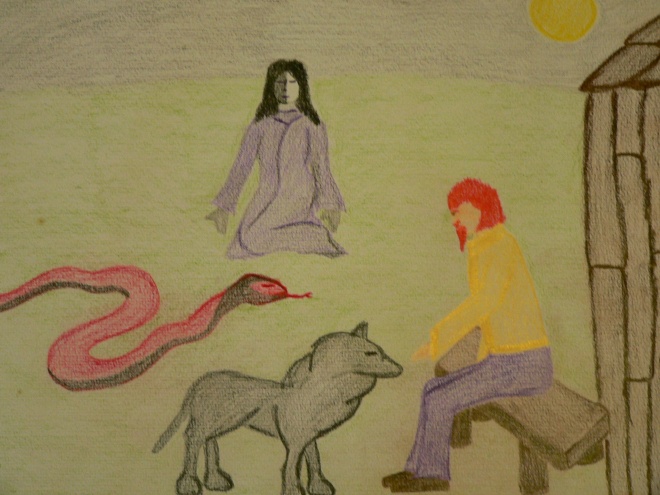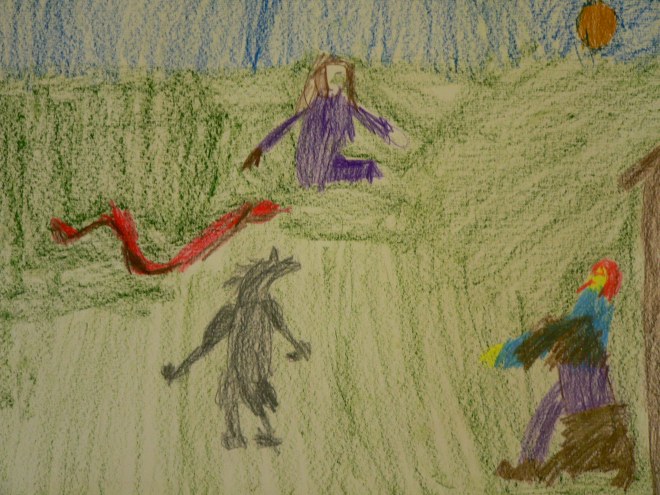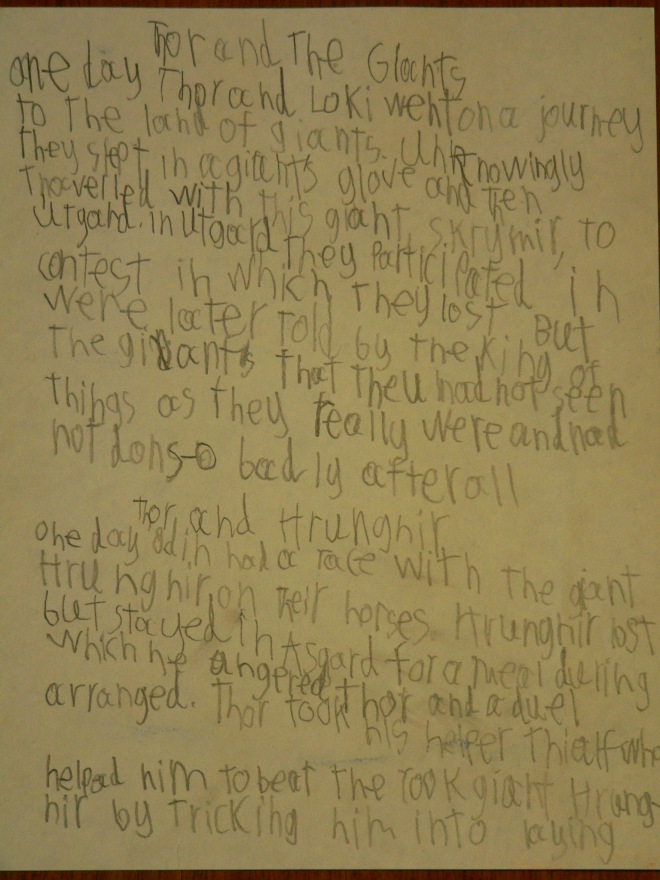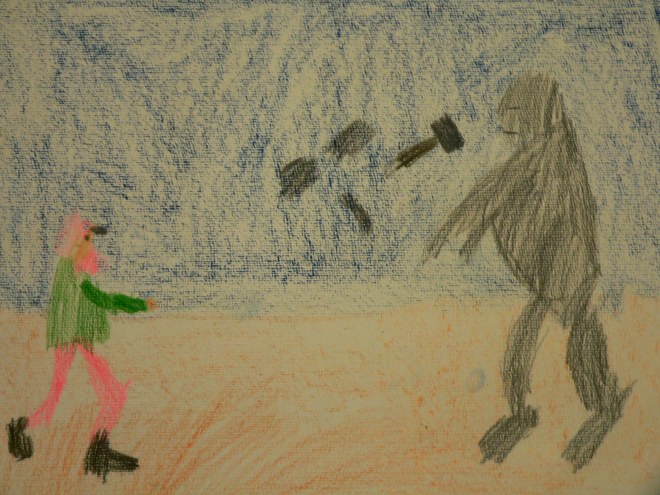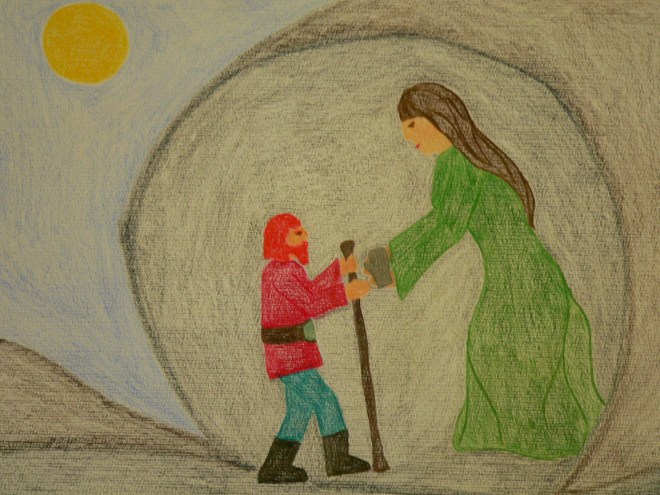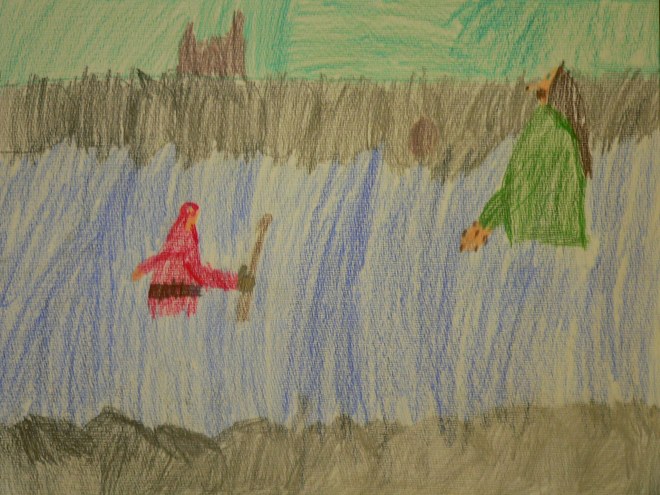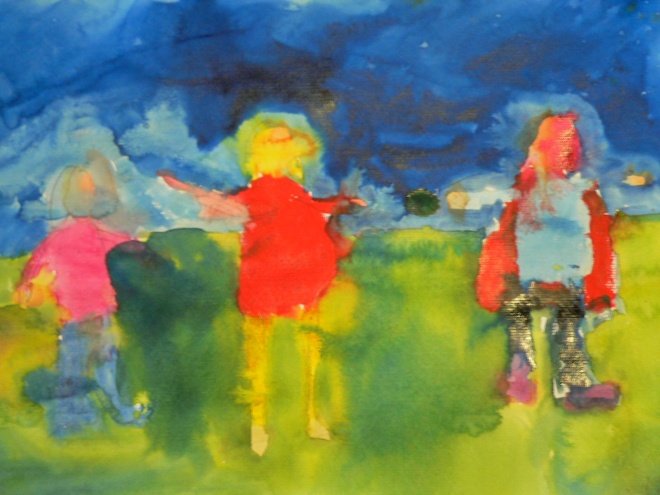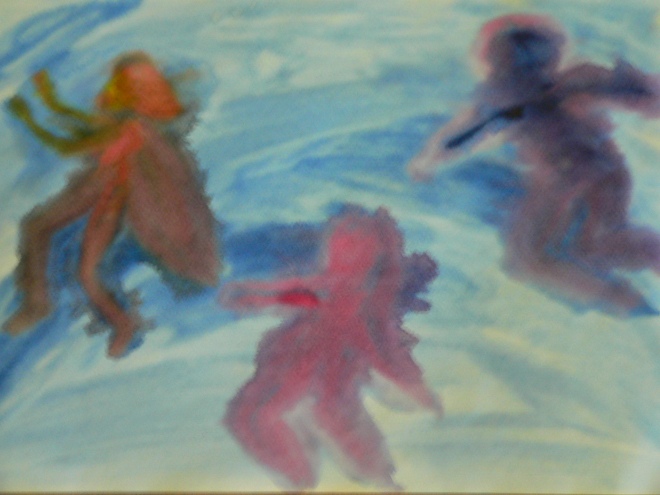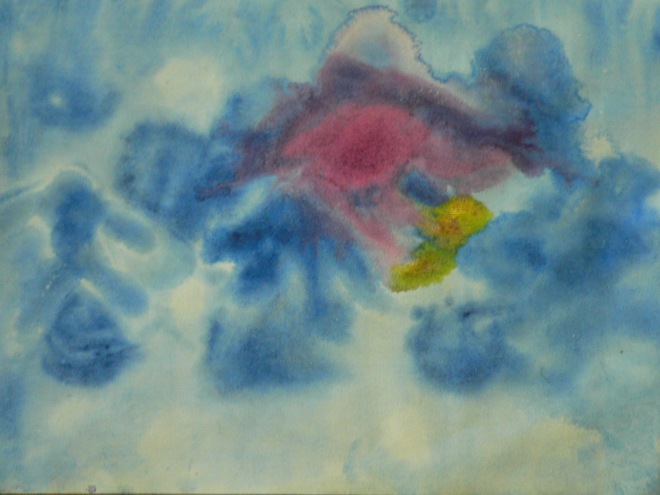Over the past few weeks, following working with red and yellow, we continued with red, creating orange and purple or violet.
In this painting carmine red is painted down from the top, and golden yellow from below. In the middle orange is created (Anusha didn’t succeed very well with creating the gradations of colour in this one) as they happily mix together.
Next we created violet. Anusha really enjoyed creating this beautiful colour. We started by painting a hill with carmine red, and then from above, cooling ultramarine blue sinks down from the sky.
Again creating a gorgeous shade of violet, we painted a shape in the middle by mixing weaker carmine red (to do this I just tell Anusha not to touch the unmixed stronger paint at the bottom of the jar) with stronger ultramarine blue. Blue then spreads out over the rest of the paper, and red comes in from the edges mixing with the blue to form a violet border.
After working with the three primary colours, and having created the secondary colours, we moved on to paintings with complimentary contrasts.
The first was the contrast between red and green. In this painting we first painted the whole sheet with lemon yellow, then formed red clouds with carmine and vermillion red. Next we went over the yellow around the clouds, and then added prussian blue to create green.
The second contrast was between orange and blue. We started by making golden yellow clouds on our page, and then added vermillion red to change them to orange. Finally ultramarine blue came along and surrounded the clouds.
Whilst painting over the past few weeks Anusha has started her language/arts block on The King of Ireland’s Son. One of her free paintings that she did was a scene from the story in which the king of Ireland’s son is playing cards with the enchanter of the black back-lands.
Another painting that she did was done after her lesson when I was doing some Botany painting with Elki. This is her painting of fungi, which I really love.
We continued with our contrasting colours paintings. As we did these paintings I talked to Anusha about which of the three secondary colours looked the most beautiful with or ‘answered’ each of the primary colours. She really understood, for example, that violet and green were too much like blue because they had blue in them, so orange was the contrasting colour that answered blue.
In the following three paintings we painted each of the primary colours with their contrasting colour.
Using ultramarine blue we painted a shape in the centre, surrounded it with orange by blending lemon yellow and vermillion red, and then painted blue in from the edge. We tried to paint the contrasting colours so they would touch but not blend.
Similarly starting with a shape in the centre using golden yellow, we surrounded it with violet by blending carmine red and ultramarine blue, and painted yellow in from the edge.
And using carmine red we painted a stronger shape in the centre (by dipping into the lovely red goo at the bottom of the jar), surrounded it with green by blending lemon yellow and ultramarine blue, and painted a softer red in from the edge.
The last painting we have done is of all three of the primary colours with their contrasting colours on the one page.
Anusha chose which of the paints she wanted to use for the primary colours and the secondary colour blends. We both thought these paintings looked really beautiful.
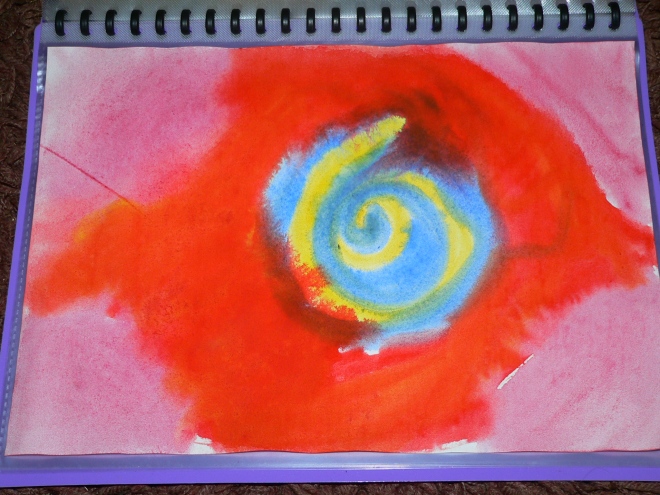
Anusha’s free painting for this lesson was a vibrant spiral.
She has also done a few other paintings with her brother and I for Elki’s botany lessons. I thought this one of ferns was lovely. I better leave it there for today, over the following weeks we are going to work with the complimentary contrasting colours for a little longer and then we’ll be moving onto further blending.


